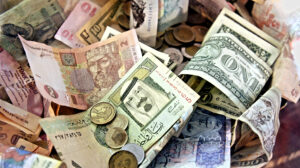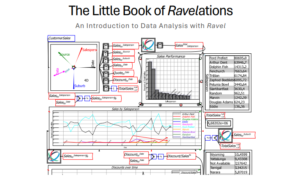This is part of our series on the book “What Has Government Done to Our Money?“. This post discusses two of the main concepts where the author of the book (Murray Rothbard) deviates from observed history. The first is the origin of money (which was NOT a “medium of exchange”, and the second is how the value of early coins was established back when money was first invented in the Bronze Age.
The page numbers below identify which page of the book (it’s an epub format linked to above) that text being commented upon appears on.
Page 10
On page 10, Murray Rothbard makes what David Graeber (the anthropologist who wrote the book “Debt: The First 5,000 Years” about the history of money) seems to consider to be THE classical error about the origin of money…
“This process, the cumulative development of a medium of exchange on the free market – is the only way money can become established. Money cannot originate in any other way, neither by everyone suddenly deciding to create money out of useless material, nor by government calling the bits of paper ‘money’”.
Rothbard, M (2005). What Has Government Done to Our Money. Ludwig von Mises Institute, fifth edition, 10
David Graeber, the anthropologist mentioned above, has stated that zero evidence has been found that money was created to make barter more efficient, and in fact, much evidence has been found to the contrary.
Per David Graeber, the principal “medium of exchange” among what we would call primitive societies, was credit.
Communities kept “ledgers”, however formal or informal, of who owed what to who. These “ledgers” were what facilitated what Rothbard is calling “indirect exchange”.
More information on this can be found in David Graebers book, or in the video shown below. His talk about the origin of money starts at about the 20 minute mark.
Page 14
Rothbard is talking about the value of minted coins being based on the amount of metal (i.e.: gold or silver) they contain. He says “Private minters can guarantee a coin at least as well as a government mint”.
While this is true in principle, humans started “cutting” metal coins with lesser value metals almost as soon as we started minting coins.
Later, when regional banks issued paper money as “Gold Certificates” or “Silver Certificates” redeemable for specified amounts of the base metal at the issuing bank, different banks used different reserve ratios.
As a result, merchants had to keep charts they updated regularly to know that a Silver Certificate issued by regional bank X was worth $A, which a similar Silver Certificate issued by regional bank Y was worth some multiple of $A. Maybe half, maybe twice, maybe whatever.
This was the direct result of different banks making individual decisions to use different reserve ratios.
So the value of a money token has only ever been partially dependent upon the material it was made of, and that was only true for metal coins.
Page 15
Rothbard is talking in defense of private coinage and he says “Moveover, all modern business is built on guarantees of standards. The drug store sells an eight ounce bottle of medicine, the meat packer sells a pound of beef. The buyer expects these guarantees to be accurate, and they are”.
Except of course, when they’re not. When companies lie, cheat, and commit fraud. As we know, fraud occurs.
Later he writes “But fraud is at a minimum, and that minimum, at least in theory, may be prosecuted”.
The 2008 financial collapse occurred because of fraud. Investment banks knowingly selling derivatives on bad mortgages where the derivatives had stellar ratings.
Because the banks were paying the rating agencies, who preferred giving false stellar ratings over losing revenue.
In the 2008 financial crisis, the marketplace did not enforce fraud very well.
And still later “We can be sure that a minter’s customers, and his competitors, would be keenly alert to any possible fraud in the weight or fineness of his coins”.
Yet prior to 1863, in the US, regional banks created Gold and Silver Certificates with seemingly arbitrary reserve ratios, and our collective work around is that shops needed to track the value of each certificate on a chart that was updated at regular intervals (weekly, I think I read somewhere).
My issue with the quoted phrase earlier in this section, is we know them to not be true.



